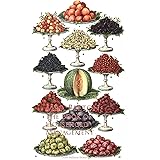Often, when we picture the majestic Himalayas, our minds immediately conjure images of towering, snow-capped peaks and pristine glaciers. While these iconic landscapes undoubtedly define much of the region’s allure, the truth, as beautifully highlighted in the video above, is that the very cradle of the Himalayas, particularly Uttarakhand, holds another equally precious treasure: its forests. These aren’t merely stands of trees; they are living testaments to ancient wisdom, vibrant ecosystems, and the very soul of a rich cultural heritage. Beyond the icy grandeur, it’s the green gold of Uttarakhand’s forests that truly breathes life into these sacred mountains.
The unique climate and varied topography of Uttarakhand foster an incredible diversity of flora, making its forests ecological hotspots. From temperate broadleaf forests to subalpine coniferous zones, each stratum supports a distinct community of plants and animals. Scientific studies, such as those published in the ‘Journal of Mountain Science,’ often emphasize the significant role these forests play in maintaining hydrological cycles, preventing soil erosion, and supporting a vast array of biodiversity unique to the Western Himalayan region.
The Majestic Deodar: Symbol of Serenity and Spirit
Among the most revered inhabitants of the Himalayan slopes is the Deodar tree (Cedrus deodara). As the video aptly points out, it is a symbol of peace and divinity. These towering conifers, with their distinct pyramidal shape and drooping branches, command respect and awe. Their wood is highly prized for its durability, aroma, and resistance to pests, traditionally used in temple construction, homes, and even intricate carvings throughout the region.
Beyond its material utility, the Deodar holds deep spiritual significance. In local folklore and Hindu scriptures, it’s often associated with gods and sages, believed to possess purifying properties. For instance, ancient texts frequently reference ‘Devadaru Vana’ (Forest of Gods), highlighting its sacred status. Research into ethnobotanical practices reveals that various parts of the Deodar tree have been used in traditional medicine, particularly for their anti-inflammatory and antiseptic properties, though scientific validation is still ongoing for many of these uses.
Rhododendron (Buransh): A Crimson Canvas and Nectar of the Hills
Few sights are as captivating as a Himalayan valley ablaze with the crimson glory of the Buransh, or Tree Rhododendron (Rhododendron arboreum), when it blooms. This vivid spectacle, usually occurring between March and May, transforms the landscape into a painter’s palette, as vividly described in the video. But the Buransh is far more than just a feast for the eyes; its nectar is considered “nectar-like” for a reason.
The bright red flowers yield a juice that is highly valued locally. Rich in antioxidants and various phytochemicals, Buransh juice is not only refreshing but also believed to possess medicinal properties, particularly beneficial for heart health and managing high blood pressure. A study published in the ‘International Journal of Pharmaceutical Sciences Review and Research’ indicated that extracts from Rhododendron arboreum flowers exhibit significant antioxidant and anti-inflammatory activities, further validating its traditional uses. Local communities harvest these flowers to make delicious squashes, jams, and chutneys, providing a valuable source of income and a unique culinary experience for visitors.
Chir Pine: The Resilient Sentinel of Himalayan Air
The ubiquitous Chir Pine (Pinus roxburghii) trees are indeed integral to the aesthetic and ecological fabric of Uttarakhand, literally filling the mountain air with their fresh, resinous scent. These hardy conifers are pioneer species, often the first to colonize degraded lands, playing a crucial role in ecological succession and soil stabilization. Their extensive root systems help prevent soil erosion on steep slopes, a critical function in the geologically active Himalayan region.
While often associated with forest fires due to their resinous nature, Chir Pine also contributes significantly to the local economy. Its timber is used for construction and fuel, and its resin is collected to produce turpentine and rosin, essential components in various industries. Despite its robustness, large-scale Chir Pine monocultures, sometimes replacing diverse native forests, have raised ecological concerns about biodiversity loss and increased susceptibility to intense fires. Efforts are now focused on promoting mixed-species forestry to enhance ecological resilience.
Kafal: The Sweet Taste of Uttarakhandi Tradition
When the video refers to the Kafal fruit (Myrica esculenta) as the “sweetness and identity of Uttarakhandi folk songs,” it perfectly encapsulates its cultural significance. This small, tart-sweet berry is a seasonal delight, eagerly anticipated by locals and tourists alike. Found on trees primarily in the mid-Himalayan regions, Kafal ripens around May and June, offering a burst of flavor that is both unique and highly addictive.
Kafal is more than just a tasty fruit; it is deeply embedded in the cultural narratives and local economy. Women and children often trek into the forests to collect these berries, which are then sold in local markets, providing a seasonal livelihood. Nutritionally, Kafal is rich in vitamins, minerals, and antioxidants, making it a healthy snack. Its presence in folk songs and poems further illustrates its integral role in the daily lives and collective memory of the people of Uttarakhand, acting as a natural marker of the seasons and a symbol of shared bounty.
The Ecological & Cultural Tapestry: More Than Just Trees
The trees of Uttarakhand are indeed “nature’s treasure,” but their value extends far beyond their individual characteristics. Together, these diverse species form complex ecosystems that underpin the very existence of life in the region. Forests act as vital carbon sinks, mitigating climate change by absorbing significant amounts of atmospheric carbon dioxide. According to reports by the Forest Survey of India, Uttarakhand boasts a substantial forest cover, consistently playing a role in national environmental health.
Furthermore, these forests are bastions of biodiversity, providing habitat for a wide range of wildlife, including leopards, various deer species, and a multitude of bird species, some of which are endemic to the Himalayas. The rich flora also supports numerous medicinal plants, many of which are utilized in traditional Ayurvedic and local healing practices. The knowledge systems surrounding these plants have been passed down through generations, making the forests not just a natural resource but also a living library of traditional ecological wisdom. Conserving these Forests of Uttarakhand is thus an imperative for both ecological balance and cultural preservation.











